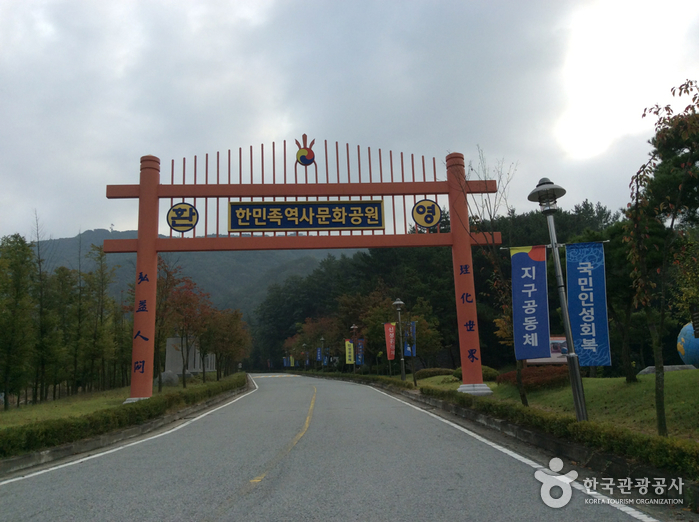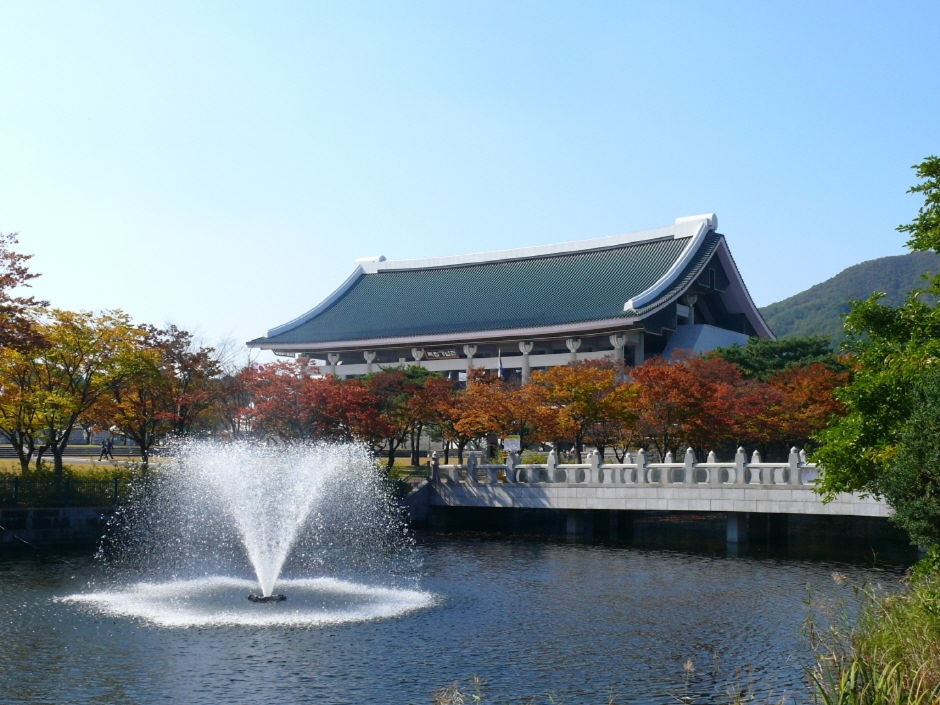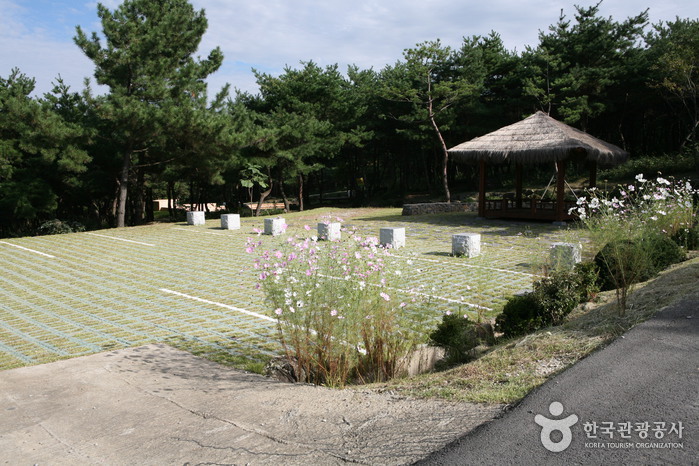Korea History and Culture Park (한민족역사문화공원)
6.3Km 2025-01-08
284-88, Gyocheonjisan-gil, Dongnam-gu, Cheonan-si, Chungcheongnam-do
+82-41-620-6700
The Korea History and Culture Park is located in one of the most relaxing places on earth.The park is based on Korea's creation myth with many sculptures and exhibitions about the Korean people's history and culture. Among the statues are important religious and philosophical figures who taught and promoted peace on earth.
Asan Mediterranean Village (지중해마을)
7.7Km 2024-02-22
55-7, Tangjeongmyeon-ro 8beon-gil, Tangjeong-myeon, Asan-si, Chungcheongnam-do
Asan Mediterranean Village, also called Blue Crystal Village, is made up of buildings reminiscent of those found in a Mediterranean village. It is particularly interesting because it is housed in the heart of a modern city. The village is divided into two sections, one taking after the Provence in southern France and the other resembling Santorini in Greece. Famous sights include the photo areas of angel’s wings and a lighthouse-shaped red postbox, along with cafés and stores.
Sure Stay Plus [Korea Quality]슈어스테이플러스호텔[한국관광 품질인증]
8.4Km 2023-05-23
32, Onsaem-ro, Asan-si, Chungcheongnam-do
+82-507-1426-3052
Sure Stay Plus is an American chain business hotel in the center of the Tangjeong Display Industrial Complex in Asan, Chungcheongnam-do, and is the first Sure Stay Plus hotel to open in Korea. Accomodation rates are reasonable, and all rooms have air purifiers and bathtubs. Nearby tourist attractions include the Independence Hall of Korea in Cheonan, the Korean independence heroine Yu Gwan-soon’s Memorial Hall, Oeam Folk Village, and Hyeonchungsa Temple. Public transport links are good, with KTX Cheonan-Asan Station 15 minutes away.
The Independence Hall of Korea (독립기념관)
8.8Km 2025-10-23
1, Dongnipginyeomgwan-ro, Dongnam-gu, Cheonan-si, Chungcheongnam-do
The Independence Hall of Korea collects, preserves, displays, and researches Korean historical documents and relics from the past to the present, focusing on the independence movements during the Japanese colonial period. The Independence Hall officially opened on the anniversary of Independence Day in 1987 thanks to donations from the public.
CU - Nam Seoul University Student Union Hall Branch [Tax Refund Shop] (cu남서울대학생회관점)
9.4Km 2024-06-26
B1F, 91, Daehak-ro, Seonghwan-eup, Seobuk-gu, Cheonan-si, Chungcheongnam-do
-
Sono Belle Cheonan Ocean Adventure (소노벨 천안 오션어드벤처)
10.7Km 2024-06-05
200 Jonghaphyuyangji-ro, Seongnam-myeon, Dongnam-gu, Cheonan-si, Chungcheongnam-do
Sono Belle Cheonan Ocean Adventure is an expansive water park attached to the Sono Belle Cheonan resort. Inspired by renowned historical sites found in Rome, Venice, and Spain, the park delivers a unique thematic experience. The facility is divided into three main areas: the indoor zone, the outdoor zone, and the hot springs section, providing entertainment and relaxation for all seasons. Guests can enjoy a variety of thrilling rides, including the Tornado Pool, Speed Racing, Body Bowl Slide, Wild Extreme River, and the Viking Tower.
Taehaksan Recreational Forest (태학산자연휴양림)
11.3Km 2021-06-15
188, Donmaru 1-gil, Dongnam-gu, Cheonan-si, Chungcheongnam-do
+82-41-529-5108
Taehaksan Mountain is located south of the borders of Sucheol-ri, Asan; Samtae-ri, and Maedang-ri in Cheonan. The mountain is known for the Rock-carved Standing Buddha (Treasure No. 407), which displays typical patterns of Buddha statues from the Goryeo era. The mountain gets its name from its shape that resemble a dancing crane. Native flowers and trees are scattered throughout the mountain, and the park's dense pine forest makes this park a great family vacation destination.
Bongjae Fishing Area (봉재낚시터)
11.5Km 2024-02-28
1258-27, Chungmu-ro, Dunpo-myeon, Asan-si, Chungcheongnam-do
Bongjae Fishing Area is in the Bongjae Reservoir, located north of Asan. Fishing can be enjoyed by the lakeside or on the fishing platforms, even in the early morning. Mini pensions, restaurants, and convenience stores can be found nearby. The platforms are also equipped with a variety of amenities. Aside from fishing, one can also enjoy the view of the area on foot or in a car.
Uniqlo - Asan Punggi Branch [Tax Refund Shop] (유니클로 아산풍기)
11.7Km 2024-04-18
1692, Oncheon-daero, Asan-si, Chungcheongnam-do
-
E-Mart - Asan Branch [Tax Refund Shop] (이마트 아산)
11.9Km 2024-04-22
1678, Oncheon-daero, Asan-si, Chungcheongnam-do
-




![Uniqlo - Asan Punggi Branch [Tax Refund Shop] (유니클로 아산풍기)](http://tong.visitkorea.or.kr/cms/resource/08/2883308_image2_1.jpg)
![E-Mart - Asan Branch [Tax Refund Shop] (이마트 아산)](http://tong.visitkorea.or.kr/cms/resource/05/2883305_image2_1.jpg)
 English
English
 한국어
한국어 日本語
日本語 中文(简体)
中文(简体) Deutsch
Deutsch Français
Français Español
Español Русский
Русский